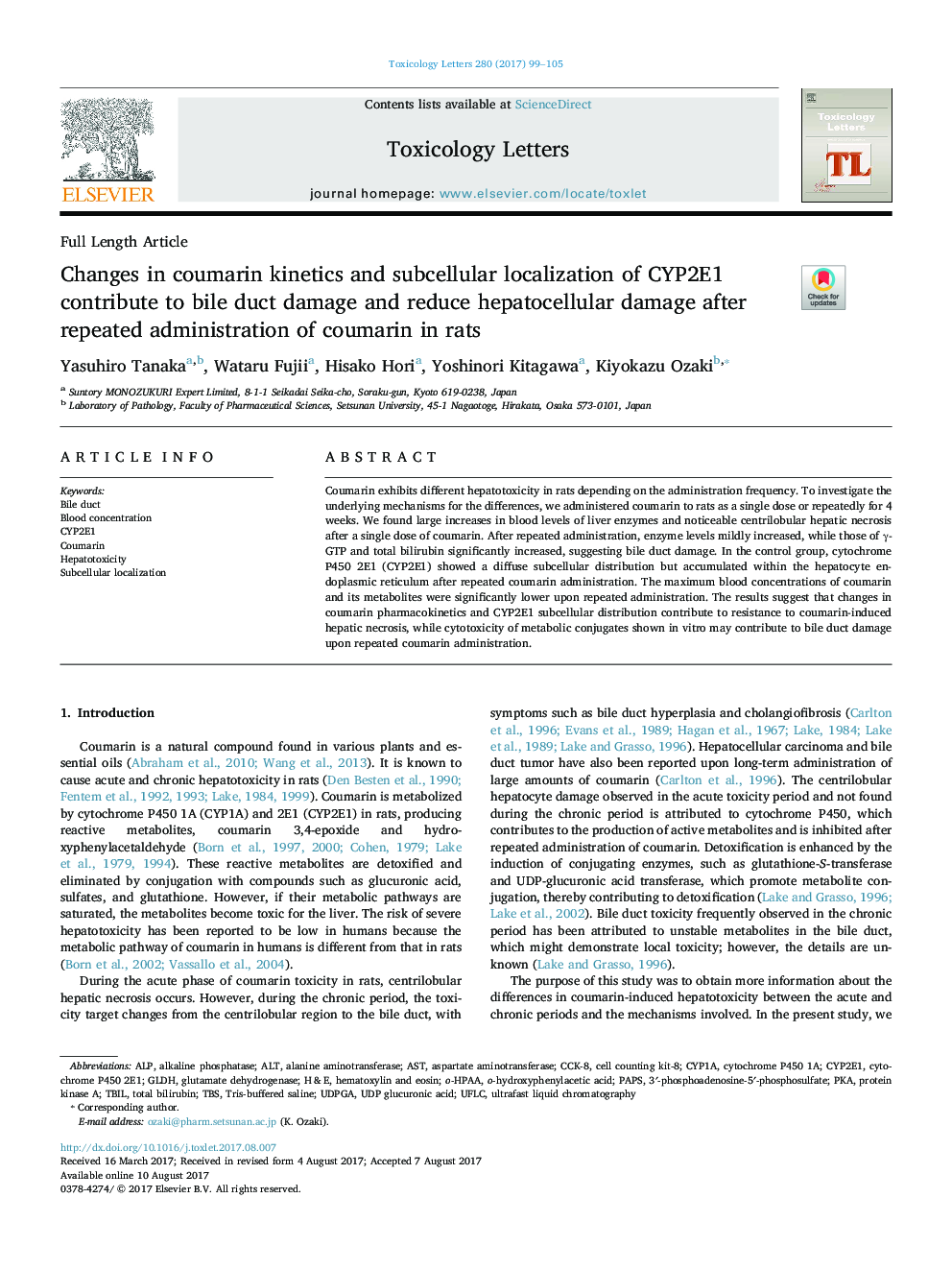| Article ID | Journal | Published Year | Pages | File Type |
|---|---|---|---|---|
| 5562026 | Toxicology Letters | 2017 | 7 Pages |
Abstract
Coumarin exhibits different hepatotoxicity in rats depending on the administration frequency. To investigate the underlying mechanisms for the differences, we administered coumarin to rats as a single dose or repeatedly for 4 weeks. We found large increases in blood levels of liver enzymes and noticeable centrilobular hepatic necrosis after a single dose of coumarin. After repeated administration, enzyme levels mildly increased, while those of γ-GTP and total bilirubin significantly increased, suggesting bile duct damage. In the control group, cytochrome P450 2E1 (CYP2E1) showed a diffuse subcellular distribution but accumulated within the hepatocyte endoplasmic reticulum after repeated coumarin administration. The maximum blood concentrations of coumarin and its metabolites were significantly lower upon repeated administration. The results suggest that changes in coumarin pharmacokinetics and CYP2E1 subcellular distribution contribute to resistance to coumarin-induced hepatic necrosis, while cytotoxicity of metabolic conjugates shown in vitro may contribute to bile duct damage upon repeated coumarin administration.
Keywords
o-hydroxyphenylacetic acidCYP2E1TBILpKaGLDHCCK-8CYP1AUFLCALTUDPGATBSo-HPAA3′-phosphoadenosine-5′-phosphosulfateH&EPAPsASTAspartate aminotransferaseAlanine aminotransferaseALPAlkaline phosphataseTris-buffered salineHepatotoxicitycytochrome P450 1acytochrome P450 2E1cell counting kit-8Blood concentrationBile ductSubcellular localizationHematoxylin and Eosinprotein kinase Atotal bilirubinCoumaringlutamate dehydrogenase
Related Topics
Life Sciences
Environmental Science
Health, Toxicology and Mutagenesis
Authors
Yasuhiro Tanaka, Wataru Fujii, Hisako Hori, Yoshinori Kitagawa, Kiyokazu Ozaki,
